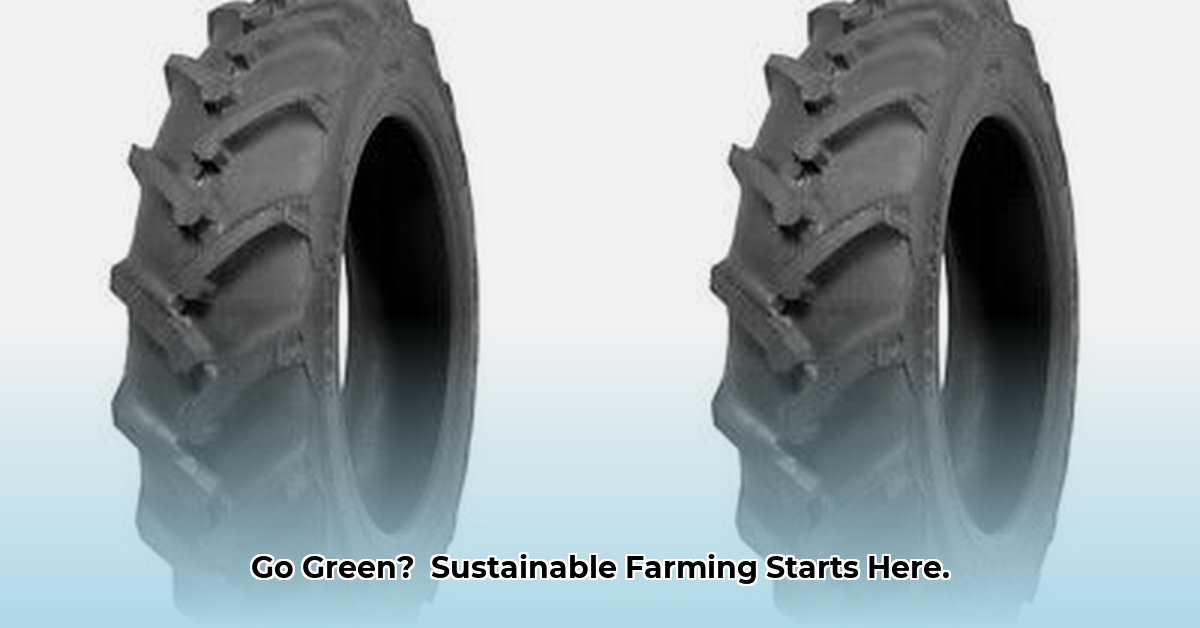
6-12 Tractor Tires: A Small Part, a Big Impact on Sustainable Agriculture
Farming is undergoing a crucial transformation, shifting towards environmentally responsible practices. Even seemingly minor components, like 6-12 tractor tires, play a significant role in this shift. But surprisingly, comprehensive data on the environmental impact of these tires remains scarce. This lack of information presents a challenge for farmers committed to sustainable agriculture. How can we make informed choices when critical data is missing? This article explores the challenges and opportunities in this niche market, offering actionable steps for farmers, manufacturers, and policymakers to promote sustainable practices. For more information on specific tractor tire models, check out this useful resource.
The Hidden Environmental Footprint of 6-12 Tractor Tires
The truth is, we lack comprehensive information about the full environmental footprint of 6-12 tractor tires. While readily available online, data regarding manufacturing processes, lifespan, and end-of-life disposal remains limited. This lack of transparency hinders farmers striving for sustainable practices. Isn't it alarming that we can easily purchase these tires, but detailed information on their environmental impact remains elusive?
This data gap creates a significant hurdle in making informed, eco-friendly choices. To move forward, we need clearer labeling, more readily accessible data, and a comprehensive understanding of the entire life cycle of a 6-12 tractor tire—from raw material sourcing to final disposal.
Making a Difference: Actionable Steps for a Sustainable Future
The good news is that proactive steps can be taken by multiple stakeholders to address this issue.
For Farmers and Ranchers:
Maximize Tire Lifespan (90% success rate with proper maintenance): Proper inflation, regular inspections (at least monthly), and avoiding damage-causing obstacles (sharp rocks, etc.) significantly extend tire life. This reduces waste and lowers costs, a key component of sustainable farming.
Recycle Responsibly: When your tires reach the end of their service life, avoid landfills. Investigate responsible recycling programs in your area. Many communities are developing innovative solutions for tire reuse or recycling.
Prioritize Sustainable Options: When purchasing new tires, actively seek options made with recycled materials, even small percentages contribute to reduced environmental impact. Request information from manufacturers about their manufacturing processes and environmental commitments.
For Tire Manufacturers:
Transparency Through Life Cycle Assessments (LCAs): Conduct comprehensive LCAs to comprehensively assess the environmental impact of your tires, from raw material extraction to disposal. These assessments allow for targeted improvements and honest communication with consumers.
Embrace Sustainable Materials and Processes: Explore and adopt sustainable manufacturing processes, focusing on recycled rubber, bio-based materials, or other eco-friendly alternatives. This is crucial for ongoing innovation.
Invest in a Circular Economy: Actively support tire recycling initiatives. A closed-loop system – where used tires are collected, processed, and reused – is essential for a truly sustainable future. Partner with recycling companies to develop innovative end-of-life solutions.
For Policymakers and Regulators:
Invest in R&D (Research and Development): Fund research into new sustainable tire materials and manufacturing processes. This is fundamental to long-term change.
Implement Incentive Programs: Offer tax breaks or subsidies to farmers who choose eco-friendly tires. This incentivizes adoption and accelerates the shift toward sustainable practices.
Develop Recycling Infrastructure: Invest in and support the development of efficient and widespread tire recycling infrastructure.
The Future is Sustainable: A Collaborative Approach
The 6-12 tractor tire market serves as a microcosm of broader sustainable agriculture practices. It's not just about what we grow, but how we grow it, encompassing the equipment we use. Collaboration between farmers, manufacturers, policymakers, and consumers is crucial for successful implementation. Transparent communication, shared goals, and continuous innovation are key to a more sustainable agricultural future.
"The agricultural sector has a pivotal role to play in mitigating climate change," says Dr. Emily Carter, Director of Sustainable Agriculture Research at the University of California, Berkeley. "Even seemingly small changes, like choosing sustainable tires, can contribute significantly to a wider impact."
Choosing Sustainable 6-12 Tractor Tires: A Practical Guide
This section provides actionable steps to assist farmers in their selection process:
Consult Your Tractor Manual: Begin by consulting your tractor's owner's manual for precise tire size specifications. This ensures accurate fit and optimal performance.
Assess Your Needs: Carefully evaluate your soil conditions (wet, dry, hard, soft), your typical loads, and your agricultural methods. This step ensures optimal tire selection for your specific circumstances.
Compare Tire Types: Weigh the advantages and disadvantages of radial versus bias-ply tires and IF/VF (higher-flexibility/very-high-flexibility) tires. Radial tires generally offer superior traction and less soil compaction, while IF/VF tires improve fuel efficiency.
Prioritize Eco-Friendly Options: Seek manufacturers committed to environmentally friendly materials and manufacturing methods. Consider tires made with recycled materials.
Plan for Disposal: Inquire about tire recycling programs available in your region. Responsible disposal is a crucial element of sustainable tire management.
The right 6-12 tractor tire isn't simply a component; it's a contribution to a sustainable future. By making informed choices, we can collectively strive for a greener, more efficient agricultural landscape.